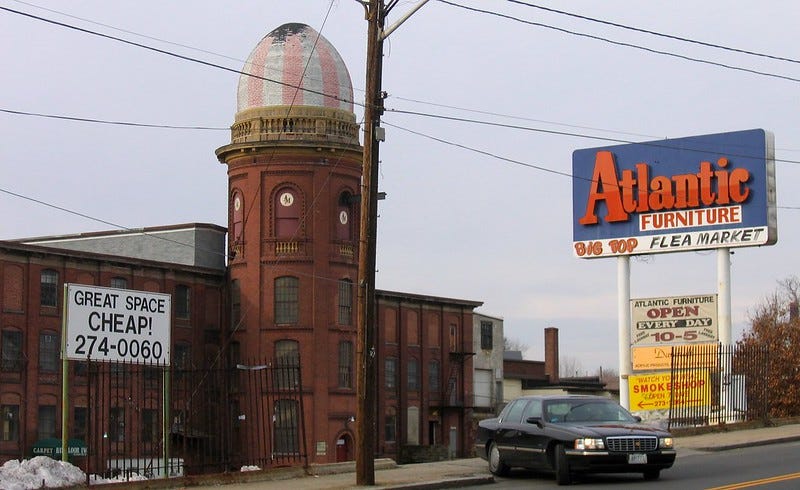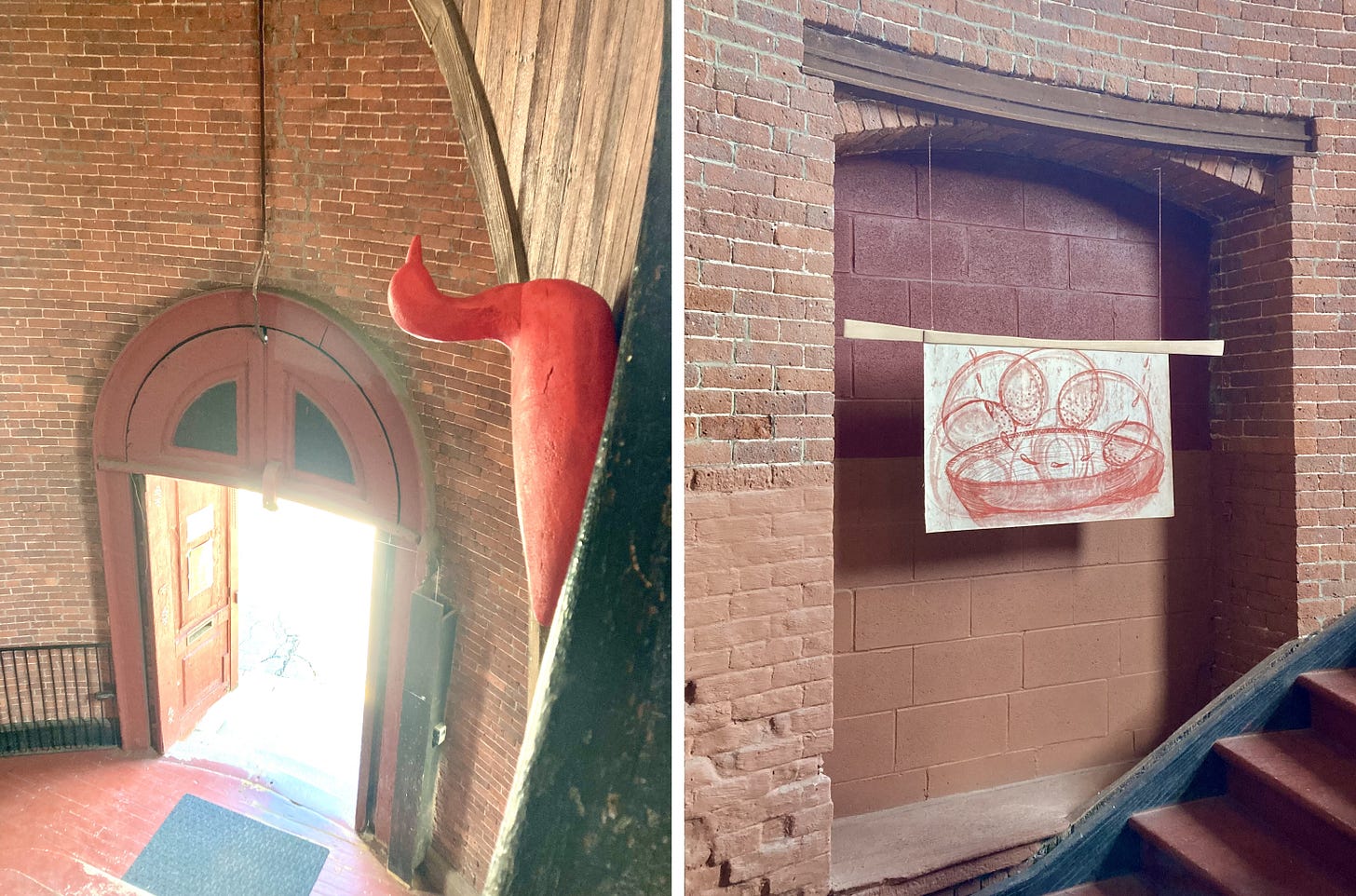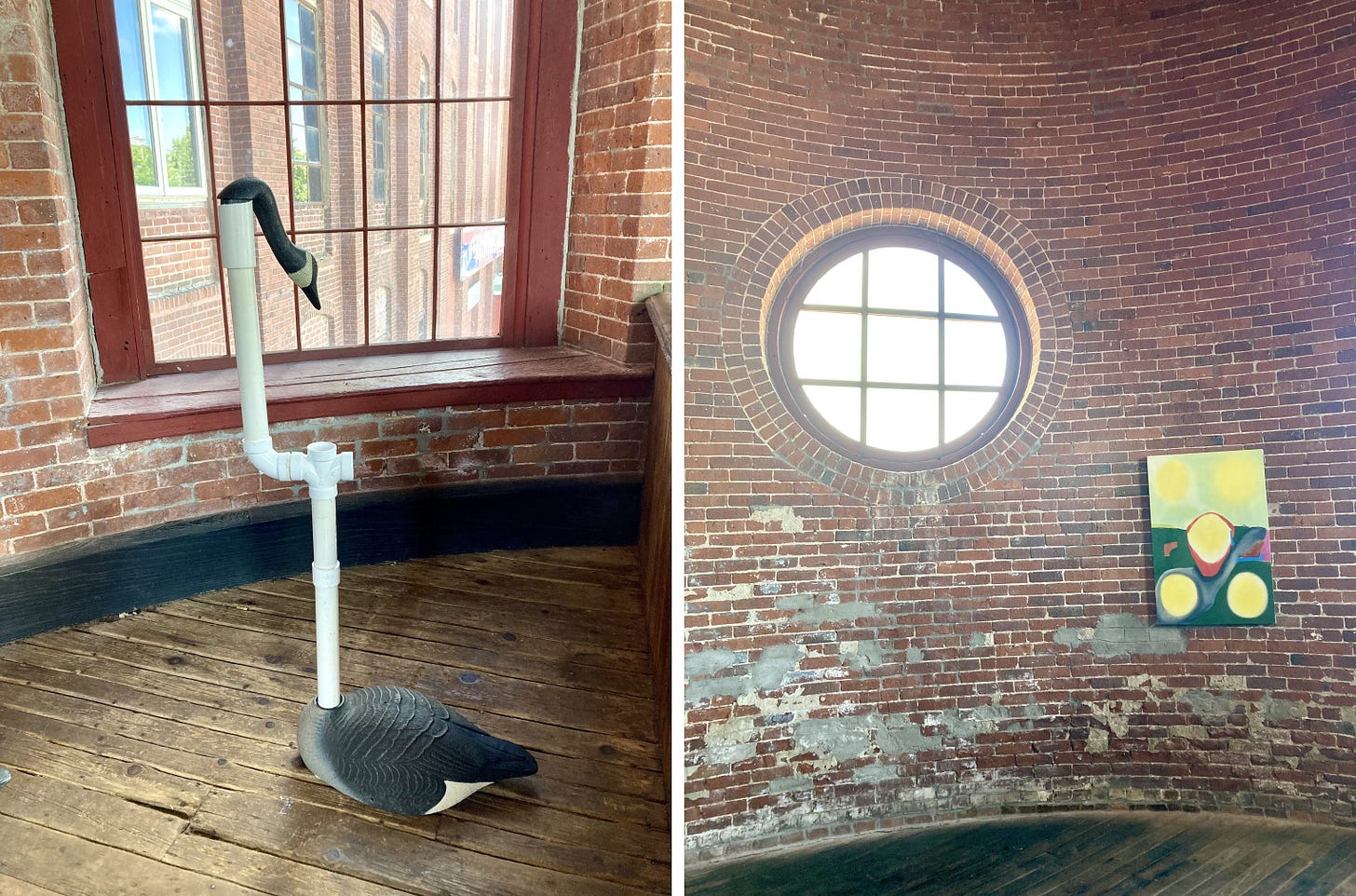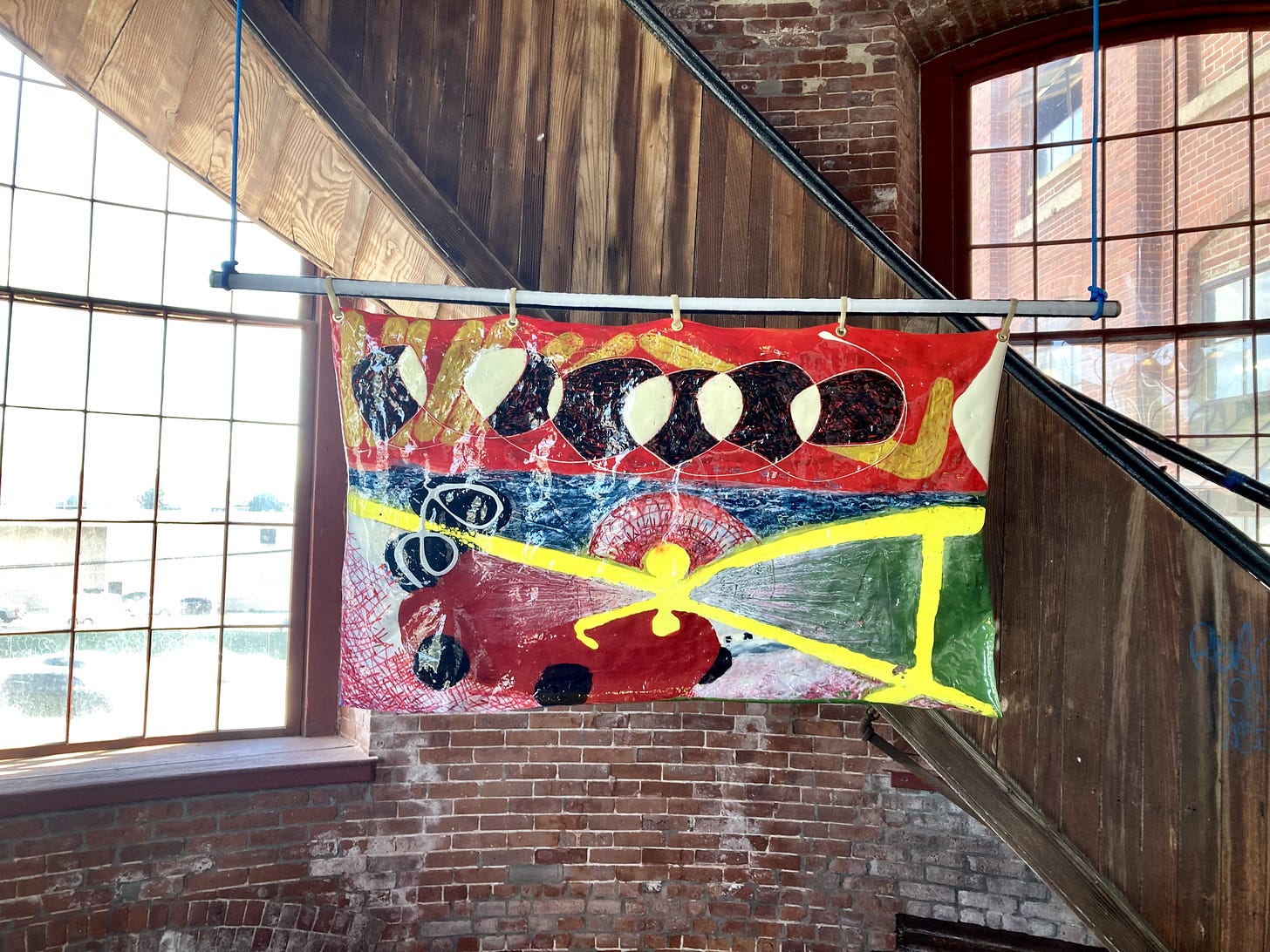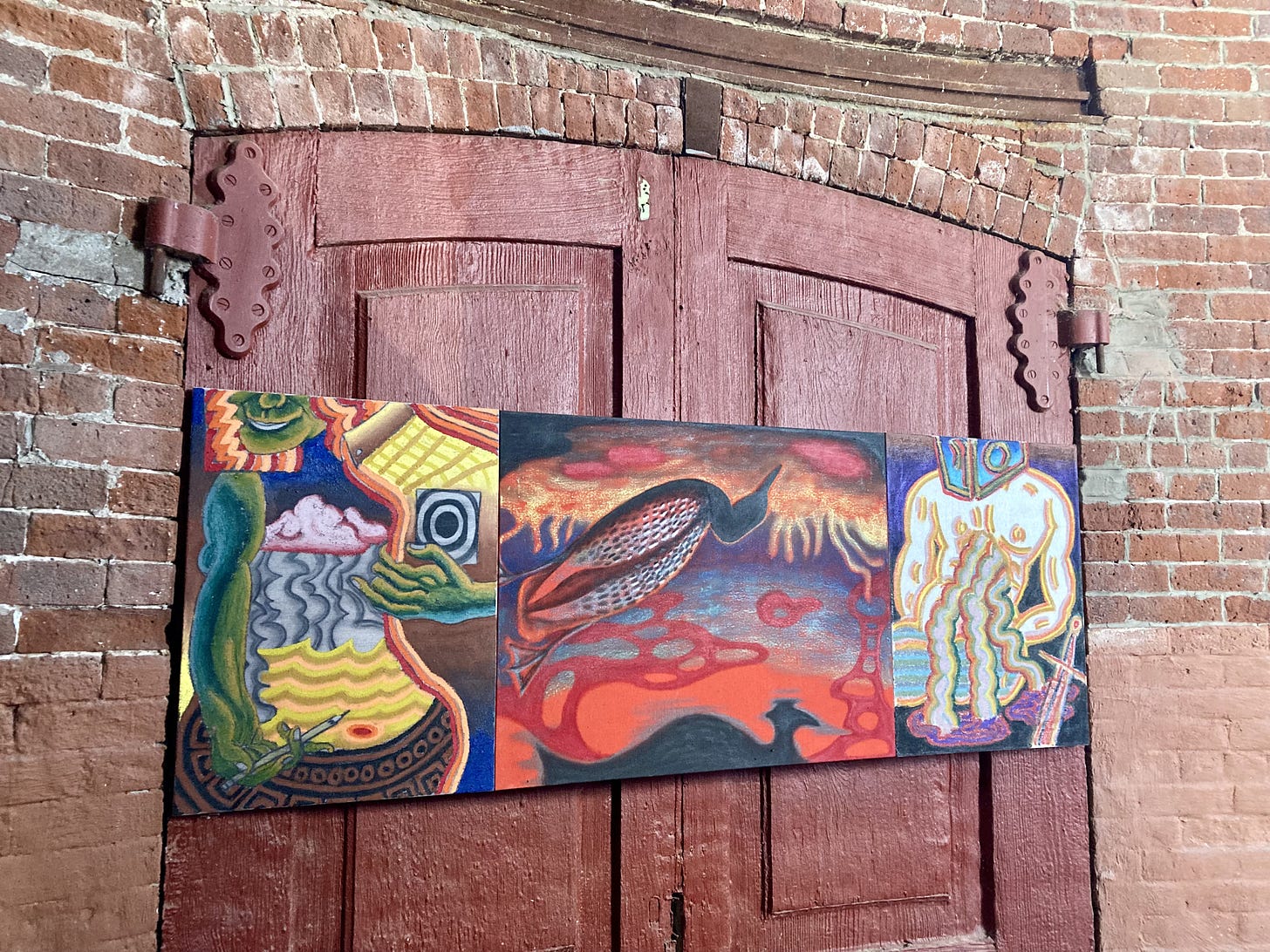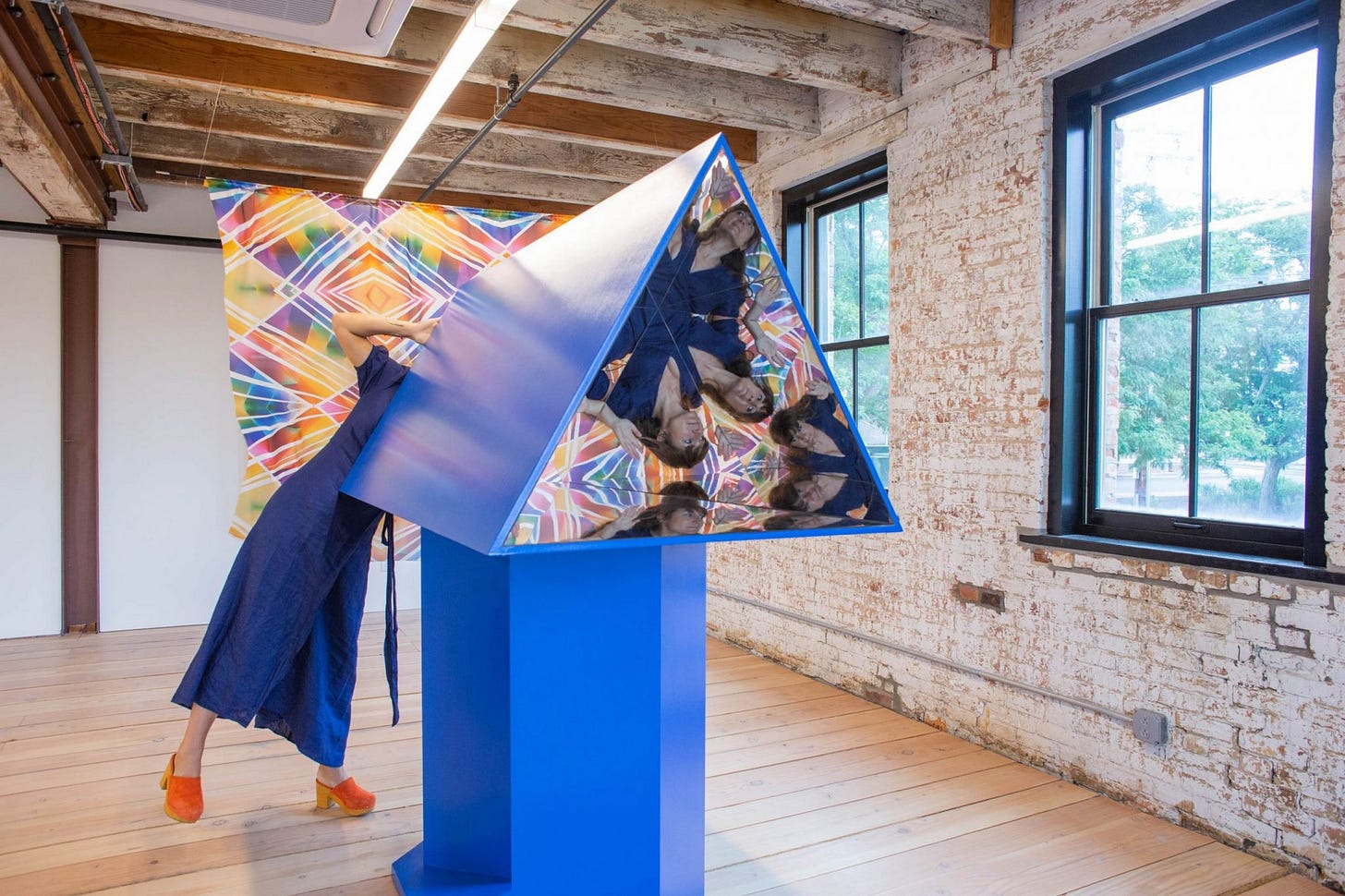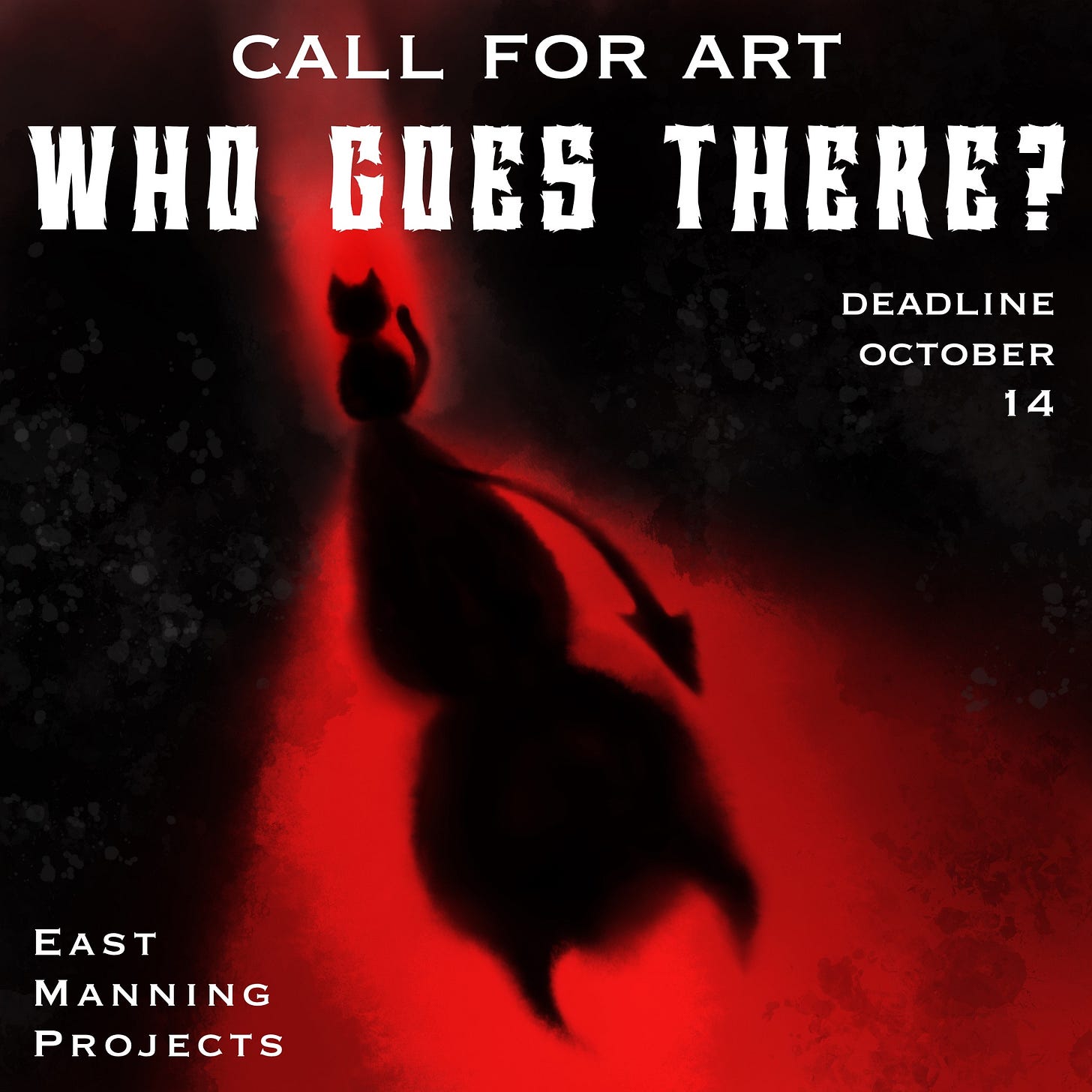Lerm Looks at Art
One of life’s great joys is finding art and beauty in unexpected places. I live for seeing the unlikely flower blooming from a crack in asphalt, the stunning stroke of sunlight on a crumbling wall, or the colorful collection of paintings and multimedia sculptures in the left tower of Atlantic Mills in Providence’s Olneyville neighborhood. The building itself is a local landmark that houses an underground flea market and a maze of studios and offices.
“Left Tower,” the pop-up exhibition by Sylvia Atwood and Julian MacMillan, ran from August 29 - 31 and was full of delightful surprises. A variety of works by the two artists playfully interacted with the late 1800’s industrial architecture.
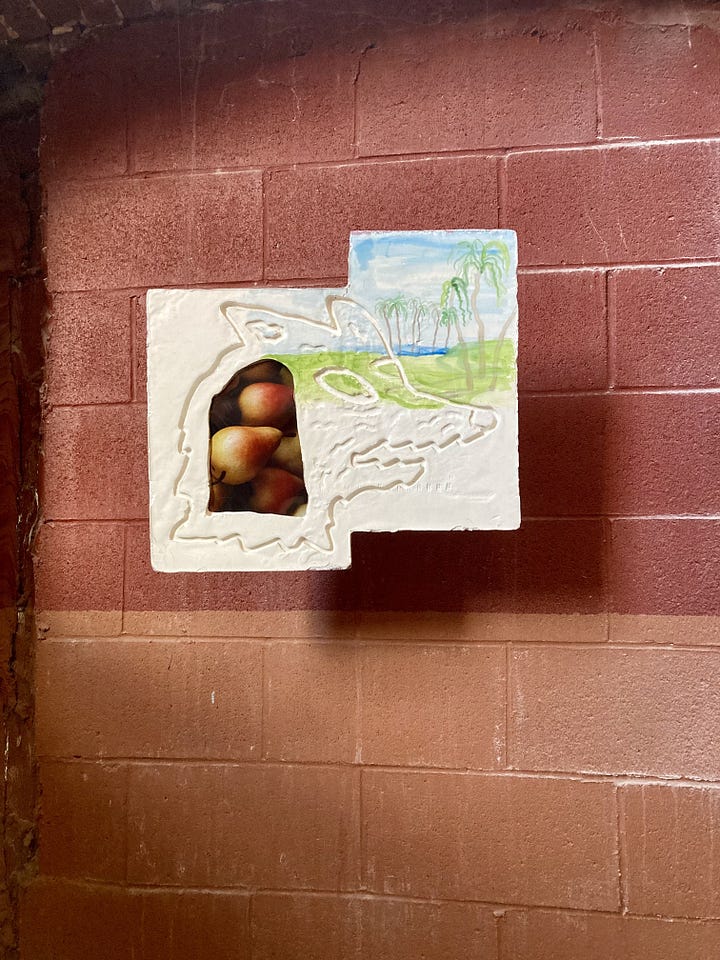
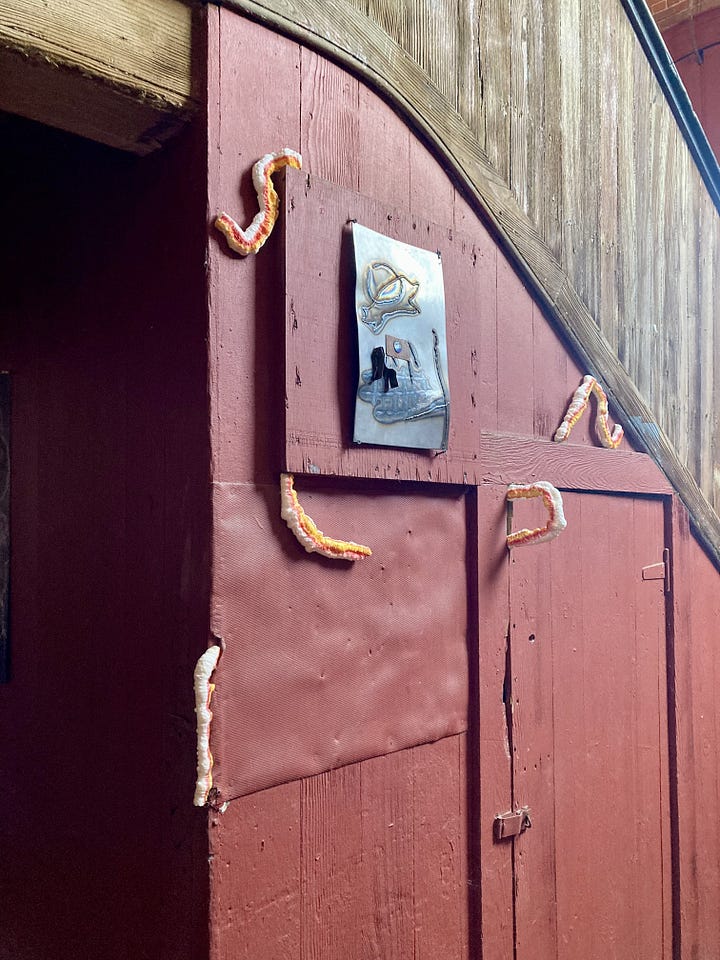
Drawings were suspended in alcoves; red chalk lines echoing red brick walls. Welded pictograms on sheet metal were flanked by undulating squiggles of expanding foam. Paintings hung over disused doorways and hid under the spiral staircase. As I looked up, I spotted a familiar red loon. A pair of PVC-pipe-augmented geese looked down at me from the top floor.
The fun of this show came not only from the clever interplay of repurposed construction materials in this post-industrial building, but also from Atwood and MacMillan’s energetic experimentations, and the sense of play evident in their process. Atwood’s studio space is in Atlantic Mills. Atwood seems to have taken much inspiration from this familiar old mill; a genre of building once ubiquitous in Olneyville, but perhaps not for long.
MacMillan’s work reminds me of time spent in the woods and waters of New England, filtered through city and memory. Both sets of work share a gestural and surreal quality, heightened by the strange ephemerality of the exhibition itself. Walking back out of the tower into the bright light of late August, it felt as though I dreamed it.
Nearby, I was treated to more art at Fuller Speed Shop — a secret coffee shop / gallery that harkens back to the more bohemian Olneyville of the early 2000s. Natalja Kent’s mesmerizing chromograms and paintings — typically quite large — were miniaturized for the small space. The custom shelves reflected the watery waviness of the images.
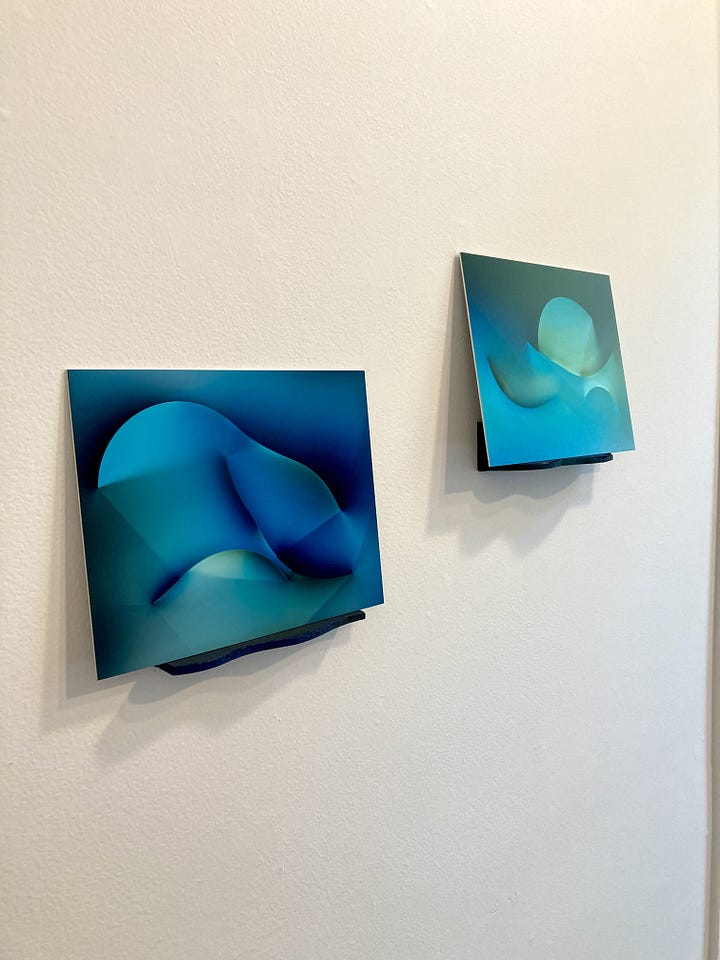
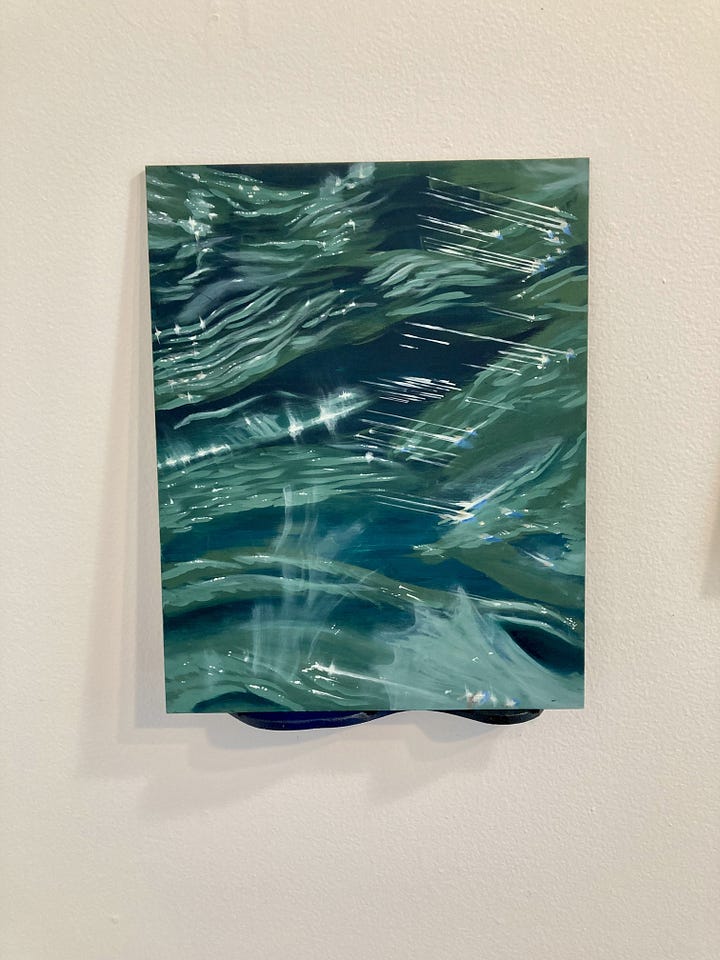
I was surprised to learn that the artworks are completely analog. In Kent’s own words, “The process involves meditating in a pitch-black room, laying light-sensitive paper on a table in the room, doing a moment meditation with flashlights and objects then processing the paper so it is stable in the light.” The outcome is so unique and beautiful that I was happy to temporarily lose myself in the undulating gradients while enjoying a breeze through the open door.
After sipping my coffee, I also took a look into Kent’s kaleidoscope. The gorgeous colors shifted and tessellated. Another coffee-drinker appeared on the other side of the open triangular tunnel, clearly enchanted by the physical presence of the piece.
The morning was a reminder that art might be hiding where you least suspect it. When you look carefully, you are rewarded with beauty.
In other news…
I am co-curating an upcoming show with Scott Lerner at East Manning Projects titled Who Goes There? We are looking for mysterious and haunting works. If you are in New England, consider submitting art to the open call! The deadline to submit is October 14.



